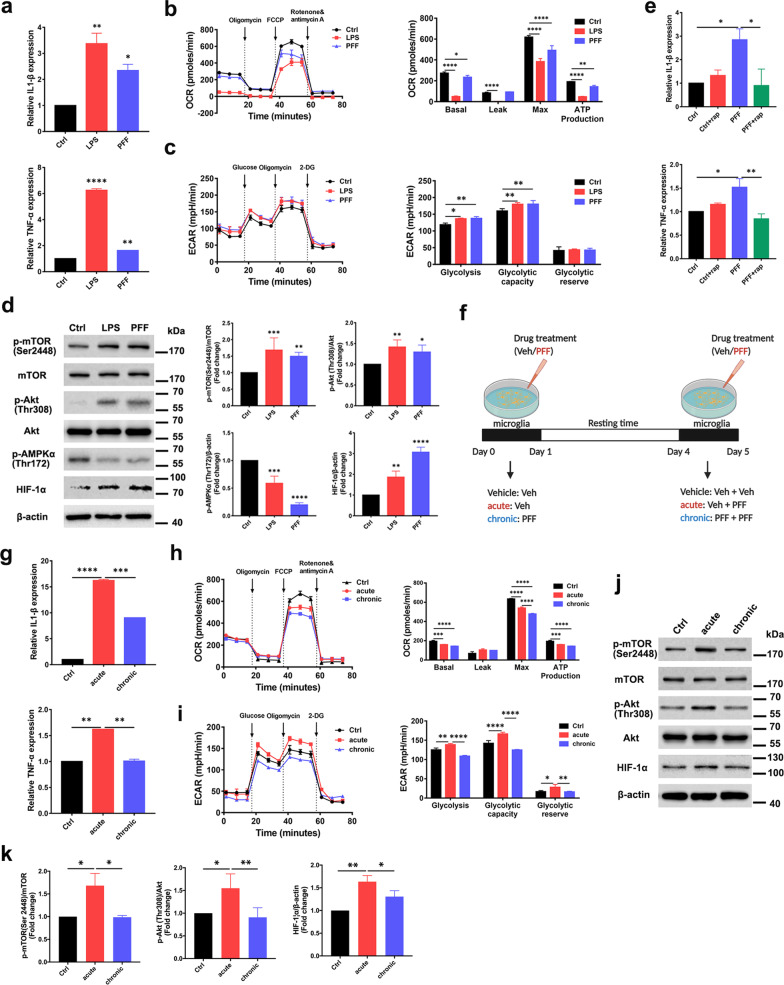Fig. 1.
Chronic treatment with PFF causes innate immune tolerance and metabolic defects in microglia via mTOR pathway. a Relative mRNA expression of IL-1β and TNF-α in microglia treated with control, LPS, or PFF for 24 h (n = 3 per group). b Oxidative phosphorylation determined by measuring OCR and c glycolysis determined by measuring ECAR in microglia treated with vehicle, LPS or PFF for 24 h (n = 3 per group). d Protein expression levels of mTOR, p-mTOR, AKT, p-AKT, p-AMPK, HIF-1a and β-actin in microglia treated with LPS or α-syn PFF (n = 5, biological replicates). e Relative mRNA expression of IL-1β and TNF-α in microglia treated with PFF only or with PFF and rapamycin for 24 h (n = 3 per group). f Schematic illustration of in vitro experiments to investigate effects of acute or chronic treatment with PFF. g Relative mRNA expression of IL-1β and TNF-α in microglia after treatment with control, acute PFF or chronic PFF (n = 3 per group). h Oxidative phosphorylation determined by measuring OCR and i glycolysis determined by measuring ECAR in microglia after treatment with control, acute PFF or chronic PFF (n = 3 per group). j, k Immunoblot analysis of mTOR pathway components in microglia after treatment with control, acute PFF or chronic PFF (n = 3–5 per group). One-way ANOVA with Tukey’s multiple comparisons test was used for statistical analysis. Error bars represent mean ± SD. *p < 0.05, **p < 0.01, ***p < 0.001, ****p < 0.0001

